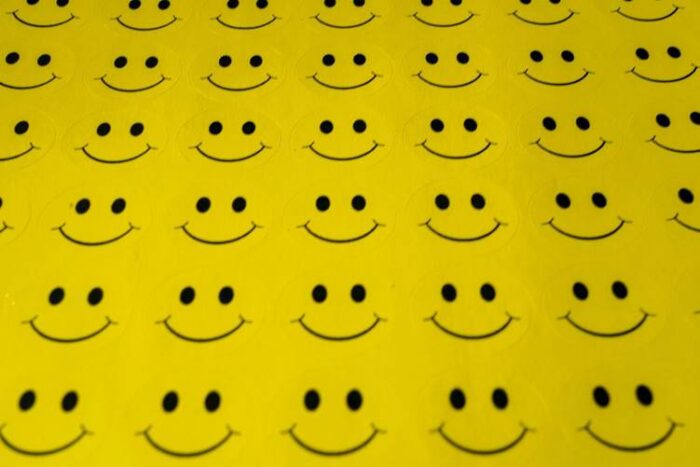











While some already see high-functioning depression as a normal thing nowadays (and, unfortunately, it is quite normal), one shouldn’t ignore it just because it’s been folded into office culture, weekend plans, emotionally unavailable group chats prone to ghosting, and other places where this condition has found an ideal breeding ground.

It can look clean. It can look very organized. You can set reminders to drink water and still feel pulled by something invisible and constant. You may have routines so tight they snap – and still walk past your discomfort like it’s something that doesn’t belong to you. That’s what makes high-functioning depression harder to notice in others and potentially much harder to admit in ourselves, especially when the loneliness that comes with it doesn’t look like loneliness at all.
According to research published by the National Library of Medicine, we can describe high-functioning depression (HFD) as living with common depressive symptoms – fatigue, loss of interest, difficulty focusing, persistent guilt, restlessness, disrupted sleep, changes in appetite – while still maintaining daily responsibilities and appearing stable to others (Joseph et al., 2025).
That means the work gets done. You show up. You reply to messages, although sometimes too late. You laugh at a meme you’ve seen about five times. You know something’s wrong, but you still feed the cat, finish the report, and take your mom’s call.
In many ways, that’s the problem: the false invisibility of the condition itself. The structure of modern life rewards productivity. Functioning has become the usual cover story. If you’ve met your deadlines, made small talk, and didn’t cry publicly, the assumption is that you’re doing just fine. People learn to bypass their symptoms without external permission to pause. So they don’t wait.
The culture we live in – performance-based, mildly ironic towards even the most serious issues, attention-fragmented through reels and shorts – subtly encourages avoidance. It congratulates high-functioning without asking about the cost.

A person with high-functioning depression usually looks just fine to the people around them.
The version of loneliness we’ll consider here sits inside technically okay things. The dinner with friends. The text from your partner. The very good reasons you haven’t called anyone back. That is not acute isolation. It’s something else.
There’s no shortage of stories you tell yourself. Maybe you insist you’re tired, overcommitted, under-caffeinated, or overstimulated. These explanations roll off your tongue without thought, normalizing behaviors that subtly mask deeper struggles.
As high-functioning depression seeps into your everyday routine, denial quietly becomes a comfort zone. Small things—like delayed replies or falling asleep with your phone in hand—are easy to dismiss as harmless habits. Gradually, emotional turbulence takes hold, quietly reshaping your relationship with food. Skipping lunch feels simpler than facing the loneliness of eating alone. Dinner reduces to a quick bowl of cereal, not out of convenience, but because your appetite fades behind emotional numbness. You’ve mastered smiling through skipped meals, believing your internal distress remains unnoticed beneath a well-maintained exterior.
However, subtle eating changes can signal deeper emotional distress. In truth, there’s a clinically recognized link between depression and eating disorders that often goes unnoticed among high-functioning individuals. Because emotional struggles frequently manifest physically, disrupted eating habits can serve as silent symptoms of underlying mental health challenges (Mental Health Providers, 2025). Yet, when outwardly you’re still managing, it’s easy to convince yourself—and others—that you’re fine, even when inside, you recognize the growing disconnect.
Let’s say people perceive you as social. You’ve got a lot of friends. You attend things. You respond to all those invites, maybe even host now and then. No one worries about you. You’re funny when you want to be, on time when it counts, and polite in a way that relieves people. Now, that doesn’t mean you feel connected.
Being in proximity to people doesn’t cure disconnection. During high-functioning depression, the ability to act as if everything’s normal often masks a deeper dissonance. You might hear your voice in a room and feel like it belongs to someone else. You might laugh and know something is missing in the timing and weight.

You might be perceived as social and still battle various issues inside.
The word loneliness suggests a certain kind of absence. But alienation is something else. You could be on a call, at a table, in a hug, and still feel apart. This distinction is important. Not everyone with high-functioning depression feels lonely in the traditional sense of the word. But there is often a mismatch between the outer and inner life.
Conversations can feel rehearsed as if taken directly from a Scandinavian deadpan comedy. Days start to blend. You forget what made things feel so interesting before. It’s hard to explain this alienation because you’re technically involved in life. People see you. You respond. You post a story. Still, it feels like you’re watching something behind glass.
Sometimes, reaching out feels exaggerated. You ask yourself, what’s the point if you’re feeling fine? You make comparisons to people who are struggling more. You measure your worth in checkboxes. That kind of thinking is dangerous.
A professional can help untangle what’s happening – what’s been normalized out of convenience, what’s been minimized out of fear. If the loneliness feels strange or misplaced, that’s often reason enough to find assistance. Therapy (in-person or online), medication, and support groups are tools.
The condition we’ve discussed is often missed because people don’t know how to name it or think it would mean surrender. But names can help. They give shape. They let us talk.
Loneliness during high-functioning depression deserves the same attention we’d give any other kind of mental pain. Functioning shouldn’t be the measure. Instead, we should recognize that getting through the day in one piece doesn’t erase the need for support.
In naming the condition, we open a space for reality, and reality is often unpleasant. And in that space, a connection becomes possible even if the first connection is with yourself.
Sources